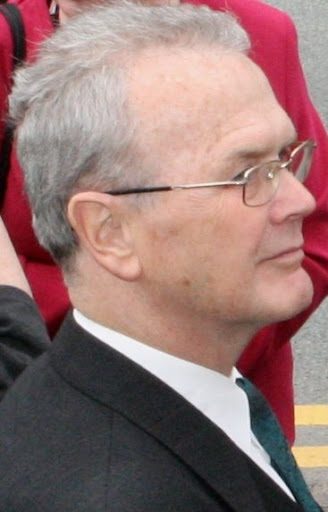Joseph W Harding
age ~77
from Pullman, WA
- Also known as:
-
- Joe W Harding
- Barbara C Harding
- Barbara Clark Harding
- Phone and address:
-
4931 State Route 27, Pullman, WA 99163
5093323178
Joseph Harding Phones & Addresses
- 4931 State Route 27, Pullman, WA 99163 • 5093323178
- Bremerton, WA
- Palouse, WA
- 4931 State Route 27, Pullman, WA 99163
Work
-
Position:Farmer
Education
-
Degree:Graduate or professional degree
Us Patents
-
At4 Receptor Ligands As Angiogenic, Anti-Angiogenic, And Anti-Tumor Agents
view source -
US Patent:7118747, Oct 10, 2006
-
Filed:Sep 30, 2003
-
Appl. No.:10/675470
-
Inventors:Joseph W Harding - Pullman WA, US
John W Wright - Pullman WA, US -
Assignee:Pacific Northwest Biotechnology Inc. - Pullman WA
Washington State University Research Foundation - Pullman WA -
International Classification:A61K 39/00
A61K 38/00 -
US Classification:4241841, 4241851, 530316
-
Abstract:ATreceptor agonists are potent activators of angiogenesis and can be used to treat diseases that are characterized by vascular insufficiency. ATreceptor antagonists, which are potent inhibitors of angiogenesis, and can be used as anti-angiogenic agents for the treatment of cancer, diabetic retinopathy, rheumatoid arthritis, psoriasis, atherosclerotic plaque formation, and any disease process that is characterized by excessive, undesired or inappropriate angiogenesis or proliferation of endothelial cells.
-
C-Met Receptor Regulation By Angiotensin Iv (At) Receptor Ligands
view source -
US Patent:7910555, Mar 22, 2011
-
Filed:Jul 6, 2007
-
Appl. No.:11/774517
-
Inventors:Joseph W. Harding - Pullman WA, US
John W. Wright - Pullman WA, US
Patrick D. Elias - Pullman WA, US
Brent J. Yamamoto - Pullman WA, US -
Assignee:Washington State University Research Foundation - Pullman WA
-
International Classification:A61K 38/08
-
US Classification:514 217
-
Abstract:The cell surface c-Met receptor, through which hepatocyte growth factor (HGF) signals are mediated, has now been identified as the Angiotensin-IV receptor (AT(4)R) in processes that include HGF-regulated cell motility, angiogenesis cancer metastasis and others. Disclosed are angiotensin-like factor compositions and methods for using them to diagnose, prevent and/or treat conditions associated with c-Met dysregulation, including altering hepatocyte growth factor activity or c-Met receptor activity by administering an angiotensin-like factor that specifically binds to a cell surface c-Met receptor.
-
C-Met Receptor Regulation By Angiotensin Iv (At) Receptor Ligands
view source -
US Patent:8236761, Aug 7, 2012
-
Filed:Jan 10, 2008
-
Appl. No.:11/972487
-
Inventors:Joseph W. Harding - Pullman WA, US
John W. Wright - Pullman WA, US
Patrick D. Elias - Pullman WA, US
Brent J. Yamamoto - Pullman WA, US -
Assignee:Washington State University Research Foundation - Pullman WA
-
International Classification:A61K 38/18
A61K 38/08
A61K 38/10 -
US Classification:514 95, 514 214, 514 216, 514 217, 514 218
-
Abstract:The cell surface c-Met receptor, through which hepatocyte growth factor (HGF) signals are mediated, has now been identified as the Angiotensin-IV receptor (AT(4)R) in processes that include HGF-regulated cell motility, angiogenesis, cancer metastasis, adipogenesis and others. Disclosed are angiotensin-like factor compositions and methods for using them to diagnose, prevent and/or treat conditions associated with c-Met dysregulation, including cancer, obesity and conditions associated with obesity, and other disorders, for example, by altering hepatocyte growth factor activity or c-Met receptor activity by administering an angiotensin-like factor that specifically binds to a cell surface c-Met receptor.
-
At4 Receptor Ligands As Angiogenic, Anti-Angiogenic, And Anti-Tumor Agents
view source -
US Patent:20060128630, Jun 15, 2006
-
Filed:Nov 16, 2005
-
Appl. No.:11/280954
-
Inventors:Joseph Harding - Pullman WA, US
John Wright - Pullman WA, US -
Assignee:Pacific Northwest Biotechnology Inc. - Pullman WA
Washington State University Research Foundation - Pullman WA -
International Classification:A61K 38/08
-
US Classification:514016000
-
Abstract:ATreceptor agonists are potent activators of angiogenesis and can be used to treat diseases that are characterized by vascular insufficiency. ATreceptor antagonists, which are potent inhibitors of angiogenesis, and can be used as anti-angiogenic agents for the treatment of cancer, diabetic retinopathy, rheumatoid arthritis, psoriasis, atherosclerotic plaque formation, and any disease process that is characterized by excessive, undesired or inappropriate angiogenesis or proliferation of endothelial cells.
-
At4 Receptor Ligands As Angiogenic, Anti-Angiogenic, And Anti-Tumor Agents
view source -
US Patent:20080194490, Aug 14, 2008
-
Filed:Oct 30, 2007
-
Appl. No.:11/929205
-
Inventors:Joseph W. Harding - Pullman WA, US
John W. Wright - Pullman WA, US -
International Classification:A61K 38/08
C07K 7/06
A61P 35/00 -
US Classification:514 17, 514 18, 530330, 530329
-
Abstract:ATreceptor agonists are potent activators of angiogenesis and can be used to treat diseases that are characterized by vascular insufficiency. ATreceptor antagonists, which are potent inhibitors of angiogenesis, and can be used as anti-angiogenic agents for the treatment of cancer, diabetic retinopathy, rheumatoid arthritis, psoriasis, atherosclerotic plaque formation, and any disease process that is characterized by excessive, undesired or inappropriate angiogenesis or proliferation of endothelial cells.
-
C-Met Receptor Regulation By Angiotensin Iv (At4) Receptor Ligands
view source -
US Patent:20130023475, Jan 24, 2013
-
Filed:Jul 12, 2012
-
Appl. No.:13/547601
-
Inventors:Joseph W. Harding - Pullman WA, US
John W. Wright - Pullman WA, US
Patrick D. Elias - Pullman WA, US
Brent J. Yamamoto - Pullman WA, US
Leen H. Kawas - Pullman WA, US -
International Classification:A61K 38/08
A61K 38/10
A61P 25/16
A61P 25/00 -
US Classification:514 95, 514 177, 514 179
-
Abstract:The cell surface c-Met receptor, through which hepatocyte growth factor (HGF) signals are mediated, has now been identified as the Angiotensin-IV receptor (AT(4)R) in processes that include HGF-regulated cell motility, angiogenesis, cancer metastasis, adipogenesis and others. Disclosed are angiotensin-like factor compositions and methods for using them to diagnose, prevent and/or treat conditions associated with c-Met dysregulation, including cancer, obesity and conditions associated with obesity, and other disorders, for example, by altering hepatocyte growth factor activity or c-Met receptor activity by administering an angiotensin-like factor that specifically binds to a cell surface c-Met receptor. In addition, members of this group of molecules may useful for treating or preventing the development of neurodegenerative diseases like general dementia, Alzheimer's disease, Parkinson's disease, and Amyotrophic Lateral Sclerosis and initiating recovery from traumatic brain injury and spinal cord trauma. These peptides and peptidomimetics may be therapeutically useful whenever increased neurotrophic activity would be clinically advantageous.
-
Angiotensin Iv Peptides And Receptor
view source -
US Patent:58543880, Dec 29, 1998
-
Filed:Dec 22, 1994
-
Appl. No.:8/360784
-
Inventors:Joseph W. Harding - Pullman WA
John W. Wright - Pullman WA -
Assignee:Washington State University Research Foundation - Pullman WA
-
International Classification:A61K 3804
A61K 3906
C07K 1600
C07K 500 -
US Classification:530329
-
Abstract:A unique and novel angiotensin AT4 receptor and AIV ligand system for binding a small N-terminal hexapeptide fragment of Angiotensin II (referred to as AIV, with amino acid sequence Val. sub. 1 -Tyr. sub. 2 -Ile. sub. 3 -His. sub. 4 -Pro. sub. 5 -Phe. sub. 6 ; SEQ. ID. NO. 1) is disclosed. AIV ligand binds saturably, reversibly, specifically, and with high affinity to membrane AT4 receptors in a variety of tissues, including heart, lung, kidney, aorta, brain, liver, and uterus, from many animal species. The AT4 receptor is pharmacologically distinct from classic angiotensin receptors (AT1 or AT2). The system employs AIV or C-terminally truncated or extended AIV-like peptides (e. g. , VYIHPFX; SEQ. ID. NO. 8) as the signaling agent, and the AT4 plasma membrane receptor as the detection mechanism.
-
Methods Of Identifying Agonists Or Antagonists Of Angiotensin Iv
view source -
US Patent:6022696, Feb 8, 2000
-
Filed:Apr 2, 1998
-
Appl. No.:9/054308
-
Inventors:Joseph W. Harding - Pullman WA
John W. Wright - Pullman WA -
Assignee:Washington State University Research Foundation - Pullman WA
-
International Classification:G01N 33567
C07K 714 -
US Classification:435 721
-
Abstract:A unique and novel angiotensin AT4 receptor and AIV ligand system for binding a small N-terminal hexapeptide fragment of Angiotensin II (referred to as AIV, with amino acid sequence Val. sub. 1 -Tyr. sub. 2 -Ile. sub. 3 -His. sub. 4 -Pro. sub. 5 -Phe. sub. 6 ; SEQ. ID. NO. 1) is disclosed. AIV ligand binds saturably, reversibly, specifically, and with high affinity to membrane AT4 receptors in a variety of tissues, including heart, lung, kidney, aorta, brain, liver, and uterus, from many animal species. The AT4 receptor is pharmacologically distinct from classic angiotensin receptors (AT1 or AT2). The system employs AIV or C-terminally truncated or extended AIV-like peptides (e. g. , VYIHPFX; SEQ. ID. NO. 8) as the signaling agent, and the AT4 plasma membrane receptor as the detection mechanism.
Name / Title
Company / Classification
Phones & Addresses
Partner
Pacific Northwest Biotechnology, Inc
Noncommercial Research Organization
Noncommercial Research Organization
745 SE Derby St, Pullman, WA 99163
5093342050
5093342050
Resumes

Dock Hand
view sourceWork:
Huckins Yacht Corporation
Dock Hand
Dock Hand

Professor
view sourceLocation:
Pullman, WA
Industry:
Research
Work:
Washington State University
Professor
Professor

Assaultman
view sourceWork:
United States Marine Corps
Assaultman
Assaultman
Skills:
Leadership
Microsoft Excel
Microsoft Office
Management
Business Strategy
Operations Management
Organizational Leadership
Time Management
Entrepreneurship
Small Business Management
Communication
Decision Making
Life Skills
Personal Development
Executive Leadership
Microsoft Excel
Microsoft Office
Management
Business Strategy
Operations Management
Organizational Leadership
Time Management
Entrepreneurship
Small Business Management
Communication
Decision Making
Life Skills
Personal Development
Executive Leadership

Joseph Harding
view source
Joseph Harding
view source
Joseph Harding
view source
Joseph Harding
view sourceLocation:
United States
News

Generators poison thousands of people a year. The U.S. has failed to force safety changes.
view source- Its the industry that has the true expertise, not the government, said Joseph Harding, the technical director at the Portable Generators Manufacturers Association, the trade group that developed the voluntary shut-off switches standard.
- Date: Dec 17, 2021
- Category: Headlines
- Source: Google
Googleplus

Joseph Harding

Joseph Harding

Joseph Harding

Joseph Harding

Joseph Harding

Joseph Harding

Joseph Harding

Joseph Harding
Youtube

Joseph Harding
view source
Joseph Harding
view source
Joseph Harris Harding
view source
Joseph Harding
view source
Joseph Harding
view source
Joseph Chope Harding
view source
Joseph Anchor Harding
view source
Joseph D. Harding
view sourceMyspace

Joseph Harding
view sourceLocality:
London and South East, United Kingdom
Gender:
Male
Birthday:
1944
Classmates

Joseph Harding
view sourceSchools:
Sheridan Hills Elementary School Hollywood FL 2006-2007
Community:
Tina Gili, William Flett

Joseph Harding
view sourceSchools:
Woodrow Wilson Elementary School Bayonne NJ 1970-1973
Community:
Dianne Hoffman

Joseph Harding
view sourceSchools:
Kate Duncan Smith DAR School Grant AL 1998-2002

Joseph Harding
view sourceSchools:
Glenn High School Birmingham AL 1961-1965
Community:
Fredrick Watts, Michael Stewart, Gail Payne

Joseph Harding (Wilcox H...
view sourceSchools:
Armstrong Elementary School Conroe TX 1991-1995, Anderson Elementary School Anderson TX 1994-1995, Madisonville Intermediate School Madisonville TX 1994-1995
Community:
Dawn Christoffersen, Nick Norfleet, Judy Dallas, Betzy Smith

Joseph Harding (1977)
view sourceSchools:
All Hallows High School Bronx NY 1973-1977
Community:
Timothy Mckenna, Gregory Howard, Clemente Castro, William Smith, Edwin Lopez, Rose Tighe, John Vedovino, Dan Scales, Juan Gonzalez

Joseph Harding, Lakeside ...
view source
Joseph Harding III | McDo...
view sourceGet Report for Joseph W Harding from Pullman, WA, age ~77









